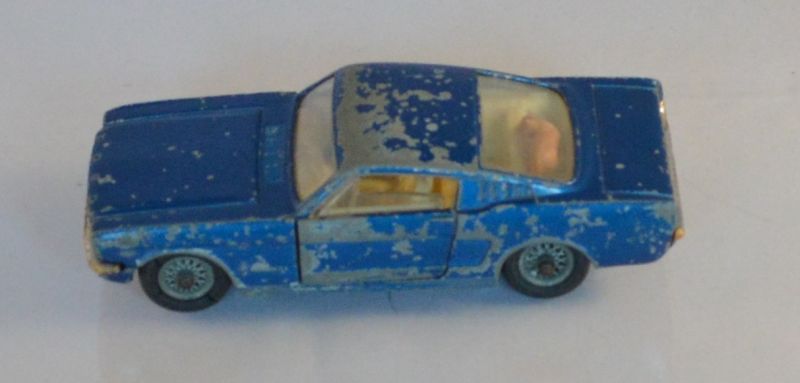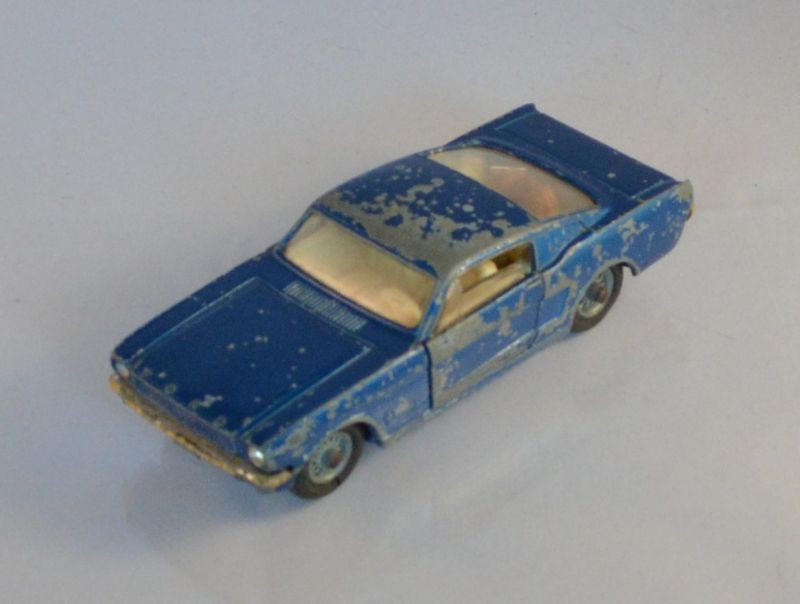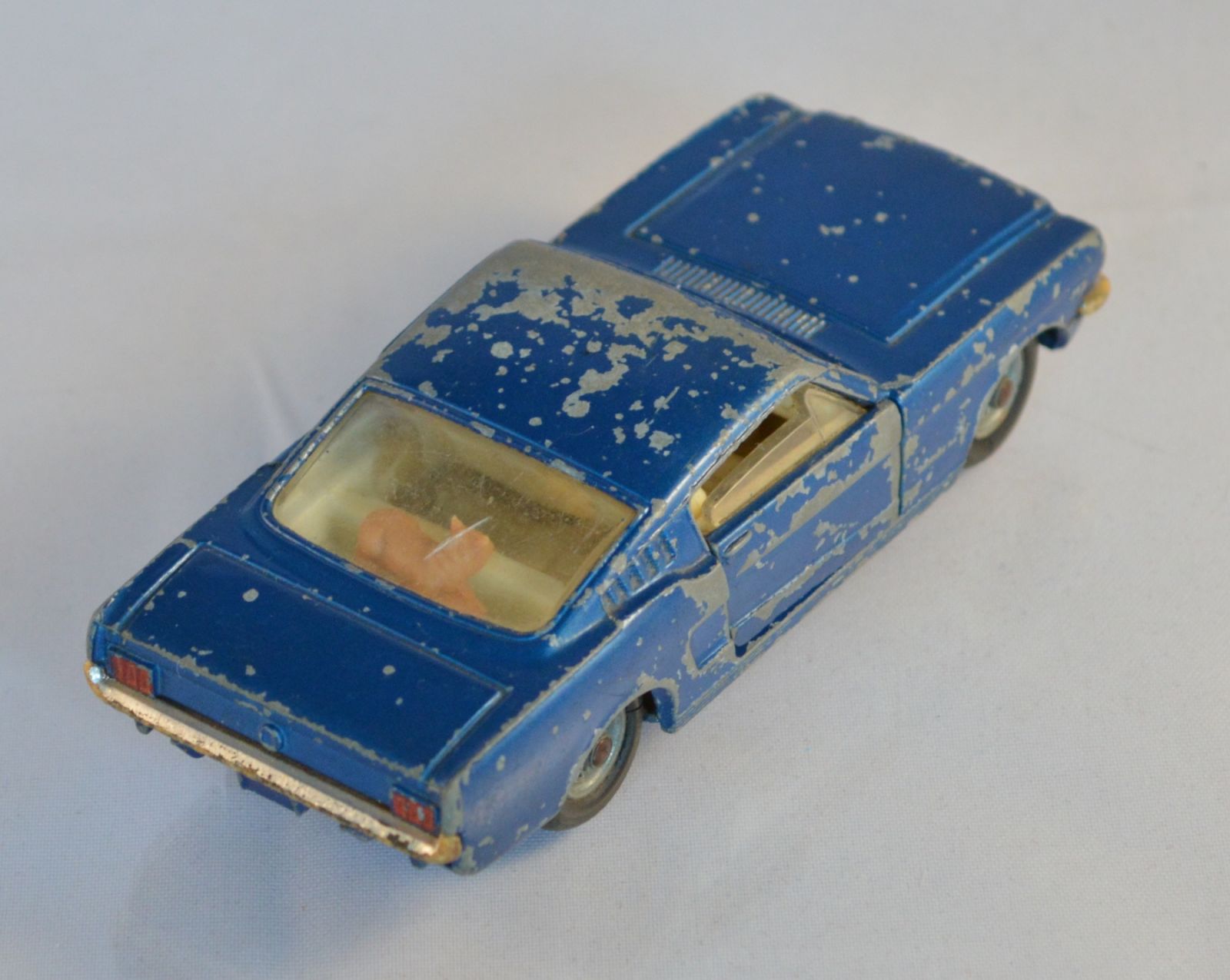Barn Find Friday presents: Corgi Toys #320 Ford Mustang Fastback 2+2.
This barn find was found in rural Nova Scotia, Canada, where it has been languishing for more than 40 years protected only with a ratty tarp. Moisture had gotten trapped under the tarp and the paint has subsequently deteriorated badly.

It still has the original tires mounted on wire spoke wheels. The tires are badly dry-rotted, so the vehicle was moved very carefully out into the first direct sunlight it had seen in decades.
The spring suspension has totally failed at all 4 corners. For this photo shoot it has been placed on blocks under the frame.
It has jeweled headlights, with the passenger side missing.

Opening the door shows us the off-white interior with still-operating tilting seat backs.

When we opened the door and leaned the seat ahead, a small tan Corgi dog hopped into the back seat and from there jumped into the parcel shelf behind rear seat and curled up.

This model of a 1965 Mustang was produced by Corgi Toys in the period 1965-1969.
1st Gen Mustang History:
The Ford Mustang was brought out five months before the normal start of the 1965 production year. Therefore, the earliest versions are often referred to as 1964½ models, but they are VIN coded by Ford and titled as 1965 models, though minor design updates for fall 1965 contribute to tracking 1964½ production data separately from 1965 data. Production began in Dearborn, Michigan on March 9, 1964 and the new car was introduced to the public on April 17, 1964 at the New York World’s Fair.
The original prototype was a two-seat, mid-engine roadster. To broaden market appeal it was later remodeled as a four-seat car with a rear bench seat with significantly less space than was common at the time. A “Fastback 2+2” model traded the conventional trunk space for increased interior volume as well as giving exterior lines similar to those of the second series of the Corvette Sting Ray and European sports cars such as the Jaguar E-Type. The “Fastback 2+2” was not available as a 1964½ model, but was first manufactured on August 17, 1964.
To cut down the development cost and achieve a suggested retail price of US$2,368, the Mustang was based heavily on familiar yet simple components, many of which were already in production for other Ford models. Many (if not most) of the interior, chassis, suspension, and drivetrain components were derived from those used on Ford’s Falcon and Fairlane.
Several changes were made at the traditional opening of the new model year (beginning August 1964), including the addition of back-up lights on some models, the introduction of alternators to replace generators, and an upgrade of the V8 engine from 260 cu in to 289 cu in displacement. In the case of at least some six-cylinder Mustangs fitted with the 101 hp 170 cu in Falcon engine, the rush into production included some unusual quirks, such as the horn ring bearing the ‘Ford Falcon’ logo covered by a trim ring with a ‘Ford Mustang’ logo. These characteristics made enough difference to warrant designation of the 121,538 earlier ones as “1964½” model-year Mustangs, a distinction that has endured with purists.
Original sales forecasts projected less than 100,000 units for the first year, an estiamte which was surpassed in only three months. Another 318,000 would be sold during the model year, and in its first eighteen months more than one million Mustangs were built.